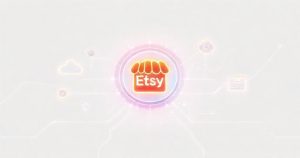Running a successful Etsy shop requires wearing many hats, from creator and marketer to accountant and shipping coordinator. As your business grows, managing these tasks manually can become overwhelming. This is where Etsy integrations come into play. These powerful third-party tools connect directly to your shop, automating critical processes and freeing up your time to focus on what you do best: creating. Understanding and leveraging the right Etsy integrations can transform your workflow, enhance customer experience, and ultimately drive significant growth for your online business.
What Are Etsy Integrations?
Etsy integrations are external software applications or services that connect to your Etsy store’s backend through an Application Programming Interface (API). This connection allows for a seamless exchange of data between your shop and the tool. For instance, when a new order is placed, an integration can automatically pull that information to create a shipping label or update your accounting records. These tools extend the native functionality of Etsy, providing specialized solutions for marketing, finance, fulfillment, and inventory management that are not built into the platform itself.
Key Benefits of Using Etsy Apps
The primary advantage of leveraging Etsy integrations is significant time savings through automation. Repetitive tasks that once consumed hours, such as creating shipping labels one by one or manually posting new listings to social media, can be handled automatically. This efficiency allows you to focus on product development and customer service. Furthermore, specialized Etsy apps can greatly enhance your marketing efforts, manage complex financial data with accuracy, and even expand your product offerings without requiring you to hold physical inventory, creating a more scalable and professional operation.
Top Integration Categories for Etsy Sellers
Navigating the world of Etsy integrations can be daunting, but they generally fall into a few key categories. Each category addresses a specific pain point for sellers, offering targeted solutions to streamline different aspects of your business. By identifying your most time-consuming tasks or areas for potential growth, you can select the right tools to build a more efficient and profitable shop. Below, we explore the most essential types of integrations every serious Etsy seller should consider.
1. Print-on-Demand (POD) Integrations
Print-on-demand services are a game-changer for artists, designers, and creators. Integrations like Printful and Printify connect your Etsy shop to a network of printing facilities. When a customer orders a product featuring your design—such as a t-shirt, mug, or poster—the order is automatically sent to the POD provider. They print, pack, and ship the item directly to your customer under your brand. This model eliminates the need for inventory, investment in printing equipment, and managing shipping logistics, making it an ideal way to expand your product line with minimal risk.
2. Shipping and Fulfillment Tools
Shipping is often one of the biggest logistical hurdles for Etsy sellers. Shipping integration tools like Pirate Ship, Shippo, and ShipStation streamline this entire process. They import your order details automatically, allowing you to purchase and print shipping labels in bulk at discounted rates. These platforms often compare costs across different carriers to ensure you get the best price. By automating address verification and sending tracking information to customers, these Etsy integrations reduce errors and dramatically improve the efficiency of your fulfillment workflow, saving both time and money on every order.
3. Marketing and Social Media Automation
Consistent marketing is crucial for driving traffic to your Etsy store. Marketing integrations help you manage this without it becoming a full-time job. Tools like Outfy, Vela, and Fera.ai can automate your social media presence by scheduling posts for new listings, sales, or positive reviews across platforms like Instagram, Pinterest, and Facebook. Others specialize in email marketing, helping you build a customer list and send newsletters. These Etsy apps ensure your shop stays visible and engages potential buyers, even when you are busy creating products or fulfilling orders.
4. Accounting and Financial Software
Keeping track of finances is essential for understanding your shop’s profitability and preparing for tax season. Accounting integrations such as QuickBooks Self-Employed, GoDaddy Bookkeeping, and Paper + Spark connect directly to your Etsy account to simplify this process. They automatically import your sales data, categorize expenses, and calculate Etsy fees, sales tax, and profit margins. This eliminates the need for manual data entry in spreadsheets, providing a clear and accurate overview of your business’s financial health at all times. Using one of these Etsy integrations ensures your books are organized and reliable.
5. Inventory and Order Management
For sellers who operate on multiple platforms—like Etsy, Shopify, and Amazon—managing inventory can be a complex challenge. An oversell on one platform can lead to a negative customer experience. Inventory management integrations, including Sellbrite, Trunk, and Ecomdash, solve this problem by syncing your stock levels in real-time across all your sales channels. When an item sells on Etsy, the inventory count is automatically updated on your other storefronts, and vice versa. This prevents overselling and provides a centralized dashboard for managing all your orders.
Choosing the Right Etsy Integration for Your Shop
With so many options available, selecting the right Etsy integrations requires a strategic approach. Start by identifying the most significant bottlenecks in your current workflow. Are you spending too much time on shipping, or do you struggle with consistent marketing? Pinpointing your specific needs will help you prioritize which type of tool to invest in first. Look for integrations that address these core challenges and offer features that align directly with your business goals, whether that is saving time, increasing sales, or expanding your product offerings.
Next, consider your budget. Many Etsy apps operate on a subscription model with tiered pricing, while others may charge a per-transaction fee. Fortunately, most offer a free trial period. Use this opportunity to test the software’s functionality and user interface to ensure it is a good fit for you. Evaluate whether the potential time savings and increased efficiency justify the cost. A small monthly investment in a powerful automation tool can often yield a significant return by allowing you to scale your business more effectively.
Finally, always perform due diligence by reading recent reviews from other Etsy sellers. Look for feedback on reliability, customer support, and ease of use. Ensure the integration is officially approved by Etsy and has a strong reputation within the seller community. A well-chosen set of Etsy integrations can become the backbone of your business operations, so taking the time to research and select the best tools for your specific situation is a critical step toward long-term success on the platform.
Conclusion: Unlocking Your Shop’s Potential
Etsy integrations are more than just convenient add-ons; they are strategic assets that empower sellers to operate more professionally and efficiently. By automating repetitive tasks in shipping, marketing, and finance, you reclaim valuable time that can be reinvested into creative work and business growth strategies. Whether you are just starting or looking to scale an established shop, the right combination of tools can streamline your operations, reduce manual errors, and ultimately enhance your customers’ experience. Embracing these technologies is a key step in transforming your Etsy shop from a demanding hobby into a thriving, manageable, and profitable business.






